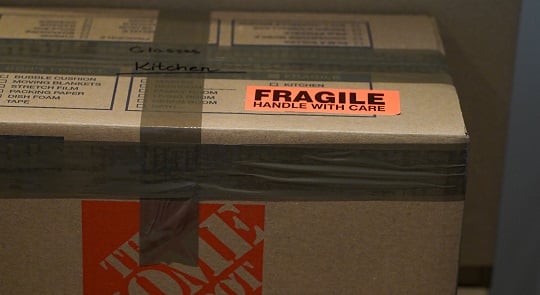Moving into a new home is both exciting and a bit overwhelming. One of the best ways to make the transition smoother is by adequately labelling your boxes. Good labelling not only saves you time but also reduces stress when you’re settling into your new place. It helps you find what you need without digging through every box, giving you a sense of control over your move.
Seven Essential Tips for Labeling Moving Boxes
- Use Quality Supplies
Invest in sturdy labels and permanent markers that won’t fade or smudge. Waterproof labels are a smart choice, especially if your boxes might get wet during the move.
- Be Specific About What’s Inside
Instead of writing vague labels like “Stuff” or “Miscellaneous,” list critical items inside the box. For example, “Kitchen – Pots and Pans” or “Bedroom – Sheets and Pillows.” This will make unpacking much easier because you’ll know precisely where your essentials are.
- Mark Boxes with Priority Items
If certain boxes contain items you’ll need right away, label them as “Open First” or “Essentials.” This could include toiletries, basic kitchen supplies, or important documents. That way, you won’t have to search through all your boxes to find these items when you arrive.
- Indicate Fragile Items Clearly
Write “Fragile” or “Handle with Care” for boxes containing delicate items in large, noticeable letters. You can also draw arrows to indicate which side should face up. This helps ensure that these boxes are appropriately handled during the move.
- Label Multiple Sides
Write labels on at least two sides of each box. No matter how they’re stacked, you’ll be able to see what’s inside without moving them around.
- Keep Small Parts Together
For any furniture you take apart, put screws, bolts, and other small pieces in sealable plastic bags. Label these bags clearly, tape them to the corresponding furniture piece, or store them all in a “Hardware” box.
- Pack an Essentials Box
Set aside a box with items you’ll need immediately, like phone chargers, essential tools, medications, and snacks. Clearly label this box and consider keeping it with you during the move so it’s easily accessible.
What Information to Include on the Labels
When you’re labelling your boxes, make sure to include:
Destination Room: Where the box should go in your new home, like “Bathroom” or “Office.”
Contents: A brief list of what’s inside, such as “Books – Novels” or “Kitchen – Utensils.”
Special Instructions: Notes like “Fragile,” “Heavy,” or “This Side Up” help handlers treat each box appropriately.
Having these details on your labels ensures that everyone knows exactly where each box belongs and how it should be handled.
Benefits of Labeling Boxes for Shipping
Proper labelling boxes for shipping comes with several perks:
Makes Unpacking Easier: Knowing what’s in each box and where it goes not only speeds up the unpacking process but also brings a sense of convenience to your move.
Reduces Stress: You won’t have to search for essential items when arriving frantically.
Improves Communication: It helps movers or friends who assist you place boxes in the correct rooms without constant guidance.
Protects Your Belongings: Clear instructions can prevent damage to fragile or valuable items, giving you peace of mind during your move.
Putting in the effort to label your boxes thoughtfully can significantly enhance your moving experience.
Professional help in labeling boxes
While labelling boxes might seem like an extra step in an already busy time, it pays off when settling into your new home. If you’re feeling overwhelmed, professional movers can assist with packing and labelling. Paramount Moving offers moving services in Vancouver to ensure your belongings are organized and well-protected. Let us handle the details so you can focus on starting the next chapter in your new space.
We offer our clients:
 (604) 835 8344
(604) 835 8344






